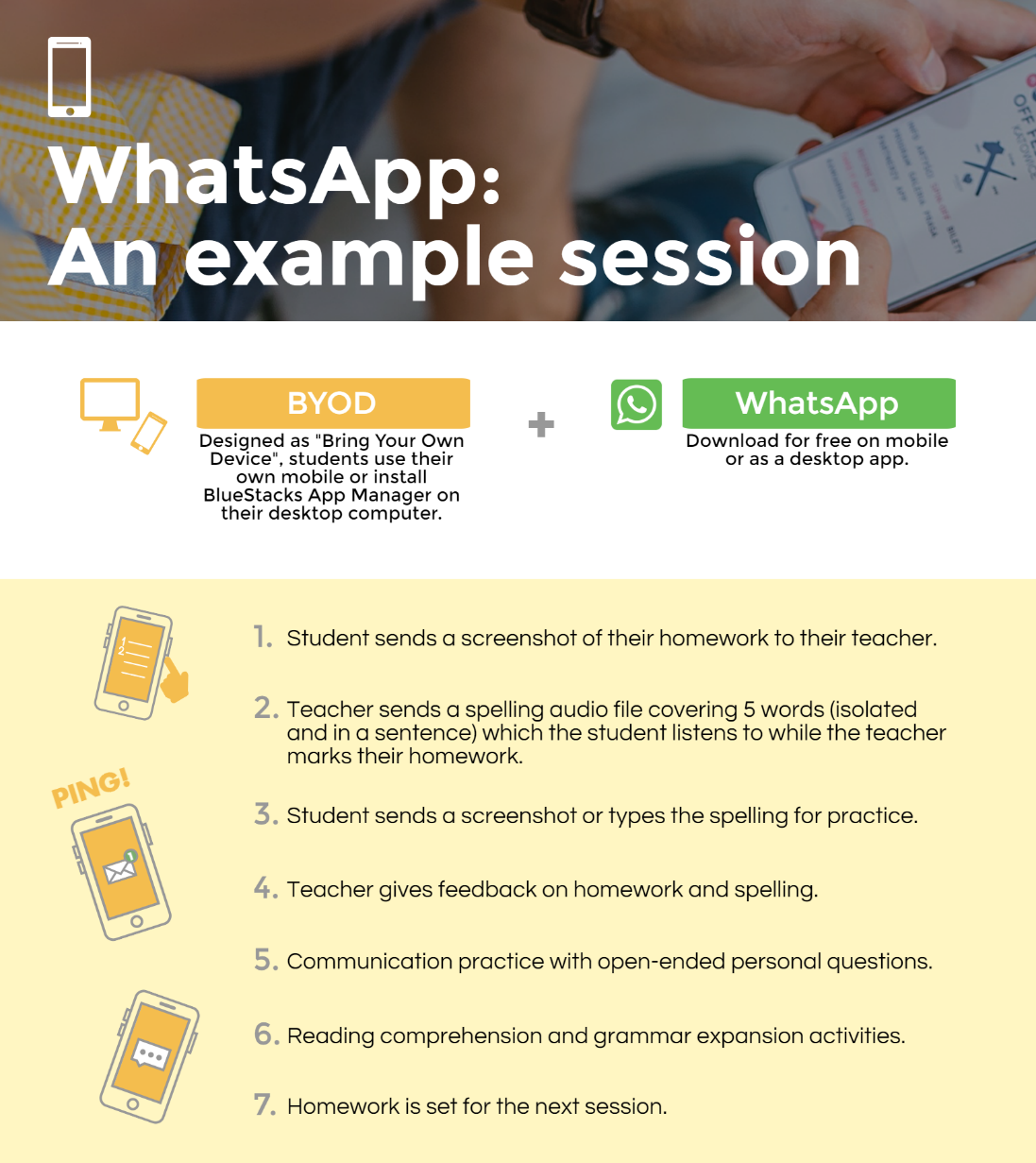WhatsApp? How messaging apps can support learning

Learners need reliable technology, particularly when they have only a short time to complete an intensive course. There’s usually no time during a short course for a student to acquire new technology skills or to fix technical issues.
As a former Academic Team Leader at the Military Technical College (MTC) in Oman, part of my role was to support students undertaking English language short courses over their vacation period. During this period back home, often in remote villages around Oman, some students would spend up to 25 hours a week working through different study activities including online tutorials, self-directed study, journal writing and other tasks and exams which could be submitted to a teacher.
When the vacation programs first started the proposed learning platform to house all this activity presented some major limitations. Most importantly, it would not be accessible to all students in their many different locations across Oman. It would also have been an unfamiliar interface that students would have to learn to use very quickly in order to succeed.
Around this time, staff at the College observed that the students were using the messaging application WhatsApp on their personal devices. We decided to try and work with what the students already knew and make the most of the capabilities WhatsApp offered.
The structure of the trial
First, we provided clear technology instructions and a back-up plan. Technical requirements included an internet connection and a smartphone app, but even with this simple set-up there were alternatives to make sure the program could still run. Teachers and students without smartphones could download BlueStacks App Player to enable their computer to act like a smartphone and download apps through Google Play with a Gmail account. Teachers received pre-arranged Gmail accounts alongside instructions and useful tips on shortcuts and settings tweaks. If the basics failed for any reason, carefully structured plans ensured that teachers could instead call the students three times each week and still achieve the outcomes needed.
Units and their components were clearly documented, and teachers received additional scaffolding, including marking rubrics for the Daily Chat sessions in WhatsApp. Marks were accumulated based on considerations like punctuality to the appointment time, responding and showing knowledge of readings.
You can see some of the ways WhatsApp could be used in a typical session in the infographic below:

The students’ experience
Initially, when using WhatsApp to run group chats, student participation was not as consistent or engaged as we wanted. The students preferred one-on-one opportunities and attended these much better. Some scheduling issues also became apparent as the course ran during the students’ holiday period and their work patterns meant they preferred a late start in the morning.
Overall, students responded really positively to the trial. They appreciated the routine of the half-hour appointments, and setting up a consistent time when both the teacher and student would be online in WhatsApp was a key component behind the success of the trial.
Get in touch with the Learning and Teaching at Navitas team if you have your own experience with technology-integrated learning and teaching to share, or join in the conversations in Yammer.
